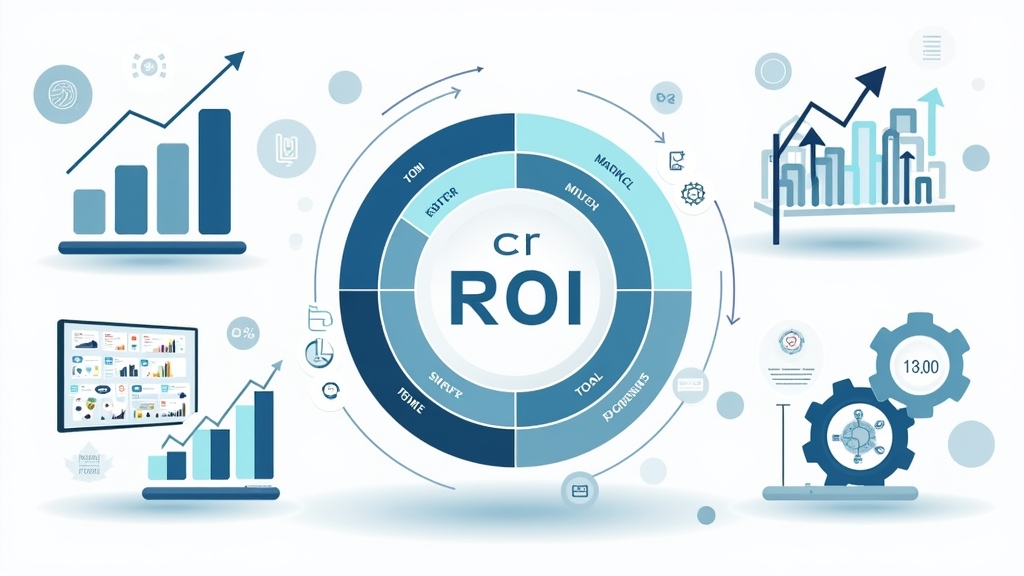Understanding Digital Marketing ROI Metrics: A Comprehensive Guide
Introduction
Digital marketing is a powerful tool for businesses today, but how do you know if your efforts are paying off? This is where understanding Digital Marketing ROI (Return on Investment) comes in. Measuring ROI helps you see the value of your marketing strategies and make informed decisions. By knowing what works and what doesn’t, you can allocate resources more effectively and boost your business’s growth. In this guide, we’ll explore key metrics, tools, challenges, best practices, and real-life examples to help you understand digital marketing ROI better.
What is Digital Marketing ROI?
Digital Marketing ROI refers to the revenue generated from digital marketing activities compared to the costs incurred in those activities. It’s a way to measure how effective your online campaigns are at generating profits. For instance, if you spend $1,000 on an ad campaign that brings in $5,000 in sales, your ROI would be 400%. This metric allows businesses to evaluate their performance and adjust their strategies accordingly.
Importance of Measuring ROI in Digital Marketing
Measuring ROI is crucial for several reasons. First, it helps you understand which campaigns are successful and which ones need improvement. Second, it provides insights into customer behavior and preferences by analyzing data trends over time. Lastly, tracking ROI enables better budget allocation; when you know what works best, you can invest more in high-performing areas while cutting back on less effective ones.
Key Metrics for Calculating Digital Marketing ROI
Conversion Rate
The conversion rate measures the percentage of visitors who take a desired action on your website—like making a purchase or signing up for a newsletter. A higher conversion rate indicates that your marketing efforts effectively attract potential customers.
Customer Acquisition Cost (CAC)
Customer Acquisition Cost is the total cost associated with acquiring a new customer through digital marketing efforts divided by the number of new customers gained during that period. Knowing your CAC helps ensure that you’re not spending too much to gain each customer compared to their lifetime value.
Return on Ad Spend (ROAS)
Return on Ad Spend calculates how much revenue you earn for every dollar spent on advertising. If you spend $100 on ads and generate $300 in sales from those ads, your ROAS would be 3:1 or 300%. This metric helps assess the effectiveness of specific ad campaigns.
Tools and Techniques for Measuring ROI
Analytics Platforms
Analytics platforms like Google Analytics provide valuable insights into user behavior on your website. They track important data such as traffic sources, bounce rates, and conversions—allowing marketers to analyze performance accurately.
A/B Testing and Experimentation
A/B testing involves comparing two versions of content or ads to see which performs better with users. By experimenting with different headlines or images, marketers can optimize their campaigns based on real user feedback.
Customer Relationship Management (CRM) Systems
CRM systems help manage interactions with current and potential customers by storing valuable data about them. These systems allow businesses to track sales processes closely and analyze customer engagement over time.
Challenges in Tracking Digital Marketing ROI
Data Overload and Interpretation Issues
One major challenge marketers face is dealing with vast amounts of data generated from various channels. Sorting through this information can lead to confusion about what metrics truly matter for measuring success.
Attribution Models: The Complexity Behind It
Attribution models determine how credit for conversions is assigned across different touchpoints within a customer’s journey—from first contact through final purchase—which can complicate accurate measurement of digital marketing effectiveness.
Best Practices for Improving Digital Marketing ROI
Setting Clear Objectives and KPIs
Establishing clear objectives ensures everyone understands what success looks like before launching any campaign while defining Key Performance Indicators (KPIs) gives measurable targets towards achieving those goals.
Continuous Monitoring and Optimization
Regularly reviewing campaign performance allows marketers to identify areas needing adjustment quickly—whether tweaking ad copy or reallocating budget funds—to maximize overall return rates continually over time!
Real-Life Examples of Successful Digital Marketing ROI Measurement
Case Studies from Various Industries
Many companies have successfully measured their digital marketing ROIs across diverse industries—from retail giants using targeted email campaigns leading increased sales figures significantly—to tech startups leveraging social media outreach resulting higher engagement levels than anticipated!
Lessons Learned from High-Performing Campaigns
High-performing campaigns often share common traits such as strong messaging aligned closely with audience needs combined strategic use analytics tools enabling ongoing improvements throughout execution phases ensuring optimal results achieved consistently!
Conclusion
As we look toward the future of digital marketing metrics like these will continue evolving alongside technology advancements! Staying informed about emerging trends ensures businesses remain competitive while maximizing returns investments made into various online channels available today!
📢 Explore More: Continue Your Journey!
If this article helped you understand digital marketing metrics better, check out “Effective Strategies for Boosting Your Online Presence”! It covers essential techniques that enhance visibility online while driving engagement effectively.














![NEEWER 55W 18"/45cm Ring Light Kit [New Version], 5600K Dimmable ...](https://m.media-amazon.com/images/I/414QLqvZWLL._AC_.jpg)








